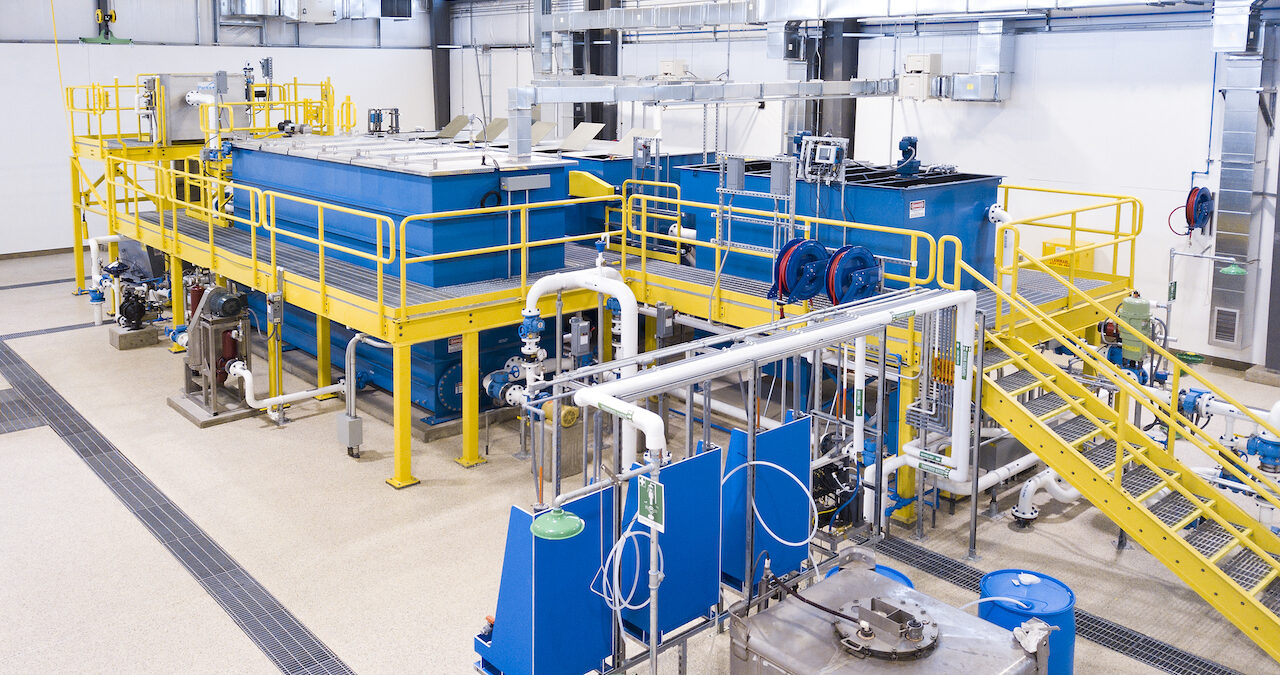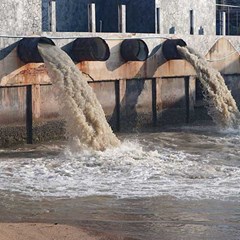Industrial Waste Water Treatment-- Tailored Solutions for Effective Wastewater Treatment
Industrial Waste Water Treatment-- Tailored Solutions for Effective Wastewater Treatment
Blog Article
Difficulties and Solutions in Hazardous Waste Water Therapy
The therapy of commercial wastewater offers a diverse selection of difficulties, varying from stringent governing compliance to the ins and outs of expense monitoring and technological constraints. The irregularity in waste structure additionally complicates the efficiency of conventional treatment techniques, typically leading to intensified operational expenditures. Nonetheless, emerging solutions such as sophisticated oxidation procedures and innovative funding models show pledge in resolving these issues. As sectors come to grips with the requirement for lasting techniques, the inquiry continues to be: what approaches will ultimately cause a balance between conformity, cost-efficiency, and environmental responsibility?
Regulatory Compliance Obstacles
How can commercial centers navigate the complex landscape of regulatory compliance in wastewater therapy? The regulative framework controling wastewater monitoring is complex, commonly differing by jurisdiction and kind of industry.
To efficiently manage these conformity difficulties, facilities ought to apply robust surveillance and reporting systems that make certain real-time information collection and analysis. Routine audits and danger analyses can recognize prospective conformity gaps, permitting for aggressive adjustments in treatment processes. Employee training programs focusing on regulatory knowledge and best practices are vital to cultivate a society of compliance within the organization.
In addition, involving with governing companies can supply important insights and clear up uncertain laws. Facilities may likewise take advantage of seeking advice from with ecological professionals that focus on wastewater treatment conformity, ensuring that they remain abreast of progressing laws. By adopting these approaches, industrial facilities can not only meet conformity needs but additionally improve their operational performance and environmental stewardship.
Expense and Financial Barriers
Browsing governing conformity in wastewater therapy usually provides significant monetary obstacles for industrial facilities. The prices related to applying needed treatment technologies, keeping compliance with strict regulations, and handling functional expenses can be discouraging. Lots of organizations face high initial capital investment for the building or upgrading of wastewater therapy plants, which might strain budgets, particularly for little and medium-sized business.
In addition, continuous operational expenses, consisting of upkeep, labor, and chemical inputs, add to the financial concern. The unpredictability of varying power rates and the prospective requirement for extra investments to fulfill advancing laws intensify these economic stress. In most cases, the lack of financial incentives or support from government bodies makes it also more tough for organizations to validate investments in innovative treatment systems.
In addition, the economic feasibility of wastewater treatment services is typically examined, specifically for sectors with limited profit margins. Therefore, it is crucial for commercial centers to discover cost-efficient methods, such as embracing cutting-edge funding choices, participating in collaborations, and leveraging emerging technologies that can assist reduce these economic obstacles while ensuring compliance with environmental standards.

Technological Limitations
Many technical restrictions prevent the efficiency of commercial wastewater treatment processes. One substantial challenge is the inadequacy of existing treatment modern technologies to address intricate contaminants. Lots of traditional techniques, such as turned on sludge and chemical rainfall, battle with the elimination of emerging pollutants, consisting of microplastics and pharmaceuticals. This constraint usually causes the discharge of improperly dealt with water, which can have harmful ecological effects.
Additionally, the scalability of therapy modern technologies positions an obstacle. While some sophisticated methods, like membrane layer filtering or sophisticated oxidation, reveal pledge in regulated settings, their application on a larger scale can be prohibitively pricey this contact form and practically difficult. Upkeep and operational intricacies better complicate the fostering of these systems, specifically for smaller industries with restricted technical experience.
The integration of real-time surveillance modern technologies also remains inadequate in several therapy centers. Without efficient surveillance systems, operators can not sufficiently assess therapy performance or spot potential failings, bring about inconsistent effluent top quality. Dealing with these technological restrictions through research study and development, together with investment in innovative remedies, is important for enhancing the efficiency of industrial wastewater treatment and making sure governing compliance.
Variability in Waste Composition
In the realm of industrial wastewater therapy, the variability in waste structure provides a formidable difficulty. Industries generate wastewater with diverse characteristics, affected by aspects such as manufacturing processes, raw materials, and functional techniques. This heterogeneity makes complex the treatment process, as conventional systems often struggle to properly deal with the large range of toxins existing.
For example, wastewater from food handling may consist of high degrees of raw material, while effluents from chemical manufacturing could include harmful substances and heavy steels. This variance requires adaptable treatment methods to guarantee compliance with ecological guidelines and safeguard public wellness. Additionally, fluctuations in waste structure can take place with time, influenced by adjustments in production schedules, maintenance activities, or the intro of new items.

Ingenious Therapy Solutions
Cutting-edge treatment options are necessary for addressing the complexities of industrial wastewater administration. Conventional techniques usually drop short in effectively removing a wide variety of pollutants, especially in facilities with diverse effluent streams. Current advancements concentrate on incorporating innovative technologies to boost therapy effectiveness and sustainability.
One encouraging strategy is using innovative oxidation procedures (AOPs), which take advantage of effective oxidants to degrade organic contaminants. AOPs, including photocatalysis and ozonation, can significantly minimize hazardous substances and enhance effluent high quality. Furthermore, membrane bioreactor (MBR) technology has gained traction, incorporating organic therapy with membrane layer purification, leading to premium effluent and minimized footprint.
An additional ingenious option is the execution of source recuperation systems. Methods like anaerobic digestion not just deal with wastewater yet likewise create biogas, which can be link harnessed as a renewable resource resource. Moreover, the fostering of expert system and artificial intelligence designs can maximize treatment processes by anticipating variants in wastewater composition, thus improving operational effectiveness.
These ingenious services not only address regulatory compliance however likewise advertise ecological sustainability, leading the way for a much more durable and reliable commercial ecological community.
Verdict
To conclude, dealing with the difficulties of industrial wastewater treatment calls for a multifaceted approach that integrates regulative conformity, expense management, and technical advancements. Cutting-edge solutions, such as you can try here sophisticated oxidation procedures and membrane bioreactor innovation, deal pathways to boost therapy effectiveness. In addition, real-time monitoring systems and joint involvement with governing firms can promote lasting methods while reducing economic stress. A commitment to constant enhancement in therapy methodologies will eventually add to the efficient monitoring of commercial wastewater and environmental management.
The therapy of industrial wastewater presents a complex range of difficulties, ranging from rigorous governing conformity to the details of cost management and technical constraints. Industrial Waste Water Treatment.Navigating regulatory compliance in wastewater treatment often provides considerable financial challenges for commercial centers. Resolving these technical constraints with research study and advancement, alongside investment in innovative services, is essential for enhancing the efficiency of commercial wastewater treatment and guaranteeing regulatory conformity
Wastewater therapy facilities need to spend in robust monitoring systems and adaptable therapy technologies qualified of fitting varying influent characteristics.In verdict, resolving the difficulties of industrial wastewater therapy needs a multifaceted strategy that integrates regulatory conformity, cost administration, and technological advancements.
Report this page